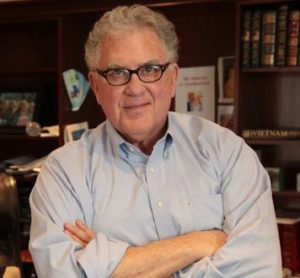In spite of the persistence of our COVID-19 problems, the process of getting back to “normal” grinds on.
Slowly, to be sure, but slowly, nevertheless. In the meantime, the banking industry remains right in the middle of the discus

sion about the Paycheck Protection Act, specifically as it relates to forgiveness.
I think Congress is right to focus on forgiveness issues. I just wish it was a little higher on its priority. As it stands now, both houses are considering measures that would mandate forgiveness of all PPP loans of $150,000 or less. That’s about 85 percent of total loans, but only 26 percent of total PPP loan dollars.
S. 4117 is for some reason stalled in the Senate. That appears to be true in spite of the fact more and more senators are realizing the idea makes sense, once the borrower attests he/she/it used the PPP funds for the specific purposes as set forth in the original CARES act. To date, 26 senators have signed on as co-sponsors of the bill, including Sen. James Lankford.
That’s the key for both bills – borrower attestation. The real fear is about fraud and the misuse of PPP funds by the borrower. That’s why the attestation requirement is in this bill and H.R. 7777.
Speaking of which – H.R. 7777 is still languishing in the House of Representatives with only 42 co-sponsors. The good news is there are three co-sponsors from Oklahoma – Reps. Frank Lucas, Kendra Horn and Tom Cole. When I stop to think about the issue of forgiveness, I’m puzzled. Borrower attestation is required by both bills, so it must be some underlying fear by Congress that the American people – specifically PPP borrowers – are dishonest.
Maybe.
But Section 1106 (b) of the CARES Act is clear about how a PPP borrower becomes “eligible for forgiveness of indebtedness on a covered loan”:
An eligible recipient shall be eligible for forgiveness of indebtedness on a covered loan in an amount equal to the sum of the following costs incurred and payments made during the covered period:
(1) Payroll costs.
(2) Any payment of interest on any covered mortgage obligation (which shall not include any prepayment of or payment of principal on a covered mortgage obligation).
(3) Any payment on any covered rent obligation.
(4) Any covered utility payment.
These are the requirements that have been in place since the CARES Act was signed into law. It’s not like the “forgiveness” concept is a brand-new idea that no one’s ever thought about before. As you can see, forgiveness has been an element of the act and the PPP process from the outset.
This is not hard. If the borrower confirms/attests he/she/it used the PPP funds received for these specific purposes, and has the right documents to support the claim, then the underlying loan “shall be eligible for forgiveness …”
The burden of proof, if you will, is on the borrower, and that’s going to be where you come in. The primary question for the borrower would seem to be, what documentation do I need to get this baby forgiven? Right? Well here’s what’s required under Subsection (e) of Section 1106:
(1) The borrower must have in his/her/its possession reliable documentation verifying the number of full-time equivalent employees on payroll and pay rates for the periods described in subsection (d), including:
(A) Payroll tax filings reported to the Internal Revenue Service.
(B) State income, payroll and unemployment insurance filings.
(2) Documentation, including cancelled checks, payment receipts, transcripts of accounts, or other documents verifying payments on covered mortgage obligations, payments on covered lease obligations, and covered utility payments.
(3) The process then requires a certification from a representative of the eligible recipient authorized to make such certifications that:
(A) Any and all documentation presented is true and correct.
(B) The amount for which forgiveness is requested was used to retain employees, make interest payments on a covered mortgage obligation, make payments on a covered rent obligation or make covered utility payments; and any other documentation the Administrator determines necessary. (I can’t imagine what that might be, since these requirements are found specifically in the law.)
My next question is the obvious one: who’s going to make sure these documents align with the attestation requirement? The answer, unfortunately, is you are.
Earlier this month the SBA released its latest list of FAQs about how to proceed with forgiveness applications. The FAQs specifically address questions about loan forgiveness, payroll and non-payroll costs forgiveness, and forgiveness reductions. You can access these new FAQs here: https://home.treasury.gov/system/files/136/PPP–Loan-Forgiveness-FAQs.pdf.
These guidelines lay out the current strategy for processing forgiveness applications. What I fear is in the final version, you will be required to re-underwrite the loan application after the fact and make a judgment your borrower has shot straight with everybody. To me, it’s the biggest challenge the industry faces in implementing the CARES Act.
We are working to include a provision that holds you harmless for reviewing or otherwise passing judgment about whether the borrower (your customer) has been honest, but I’m not holding my breath.
 Oklahoma Bankers Association We make bankers better!
Oklahoma Bankers Association We make bankers better!
